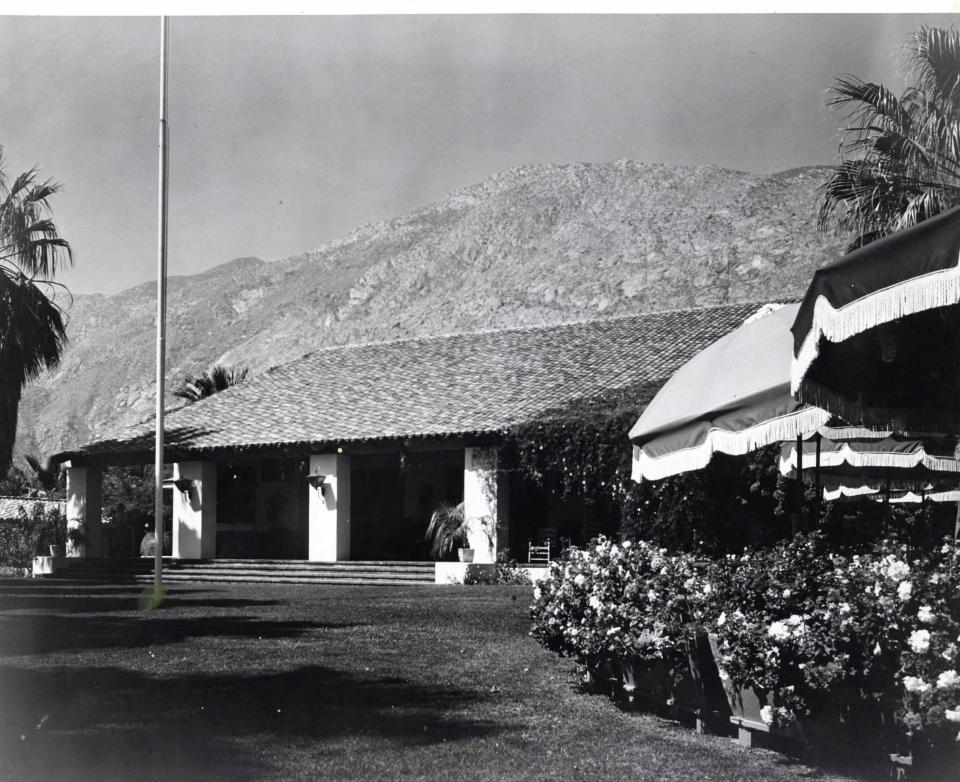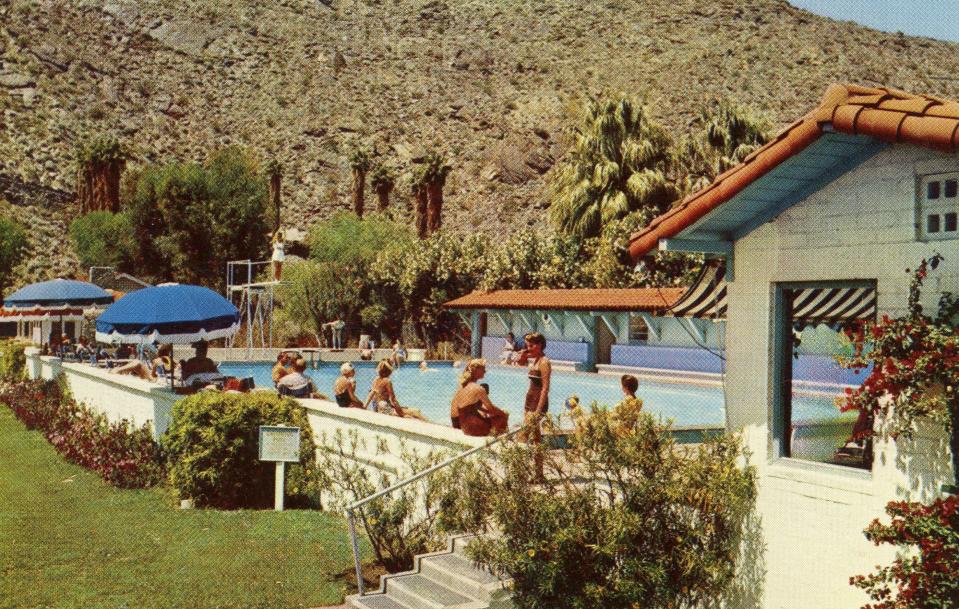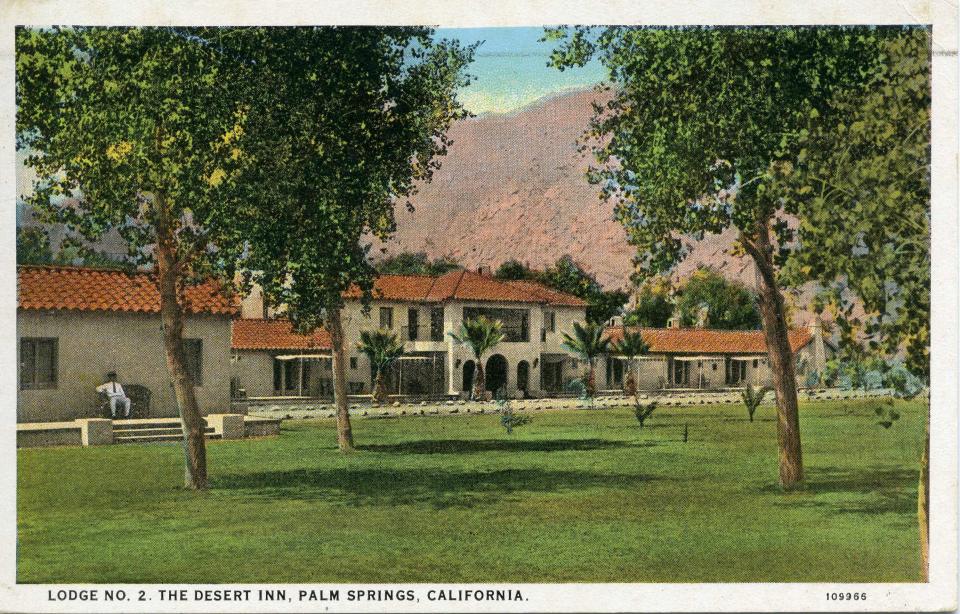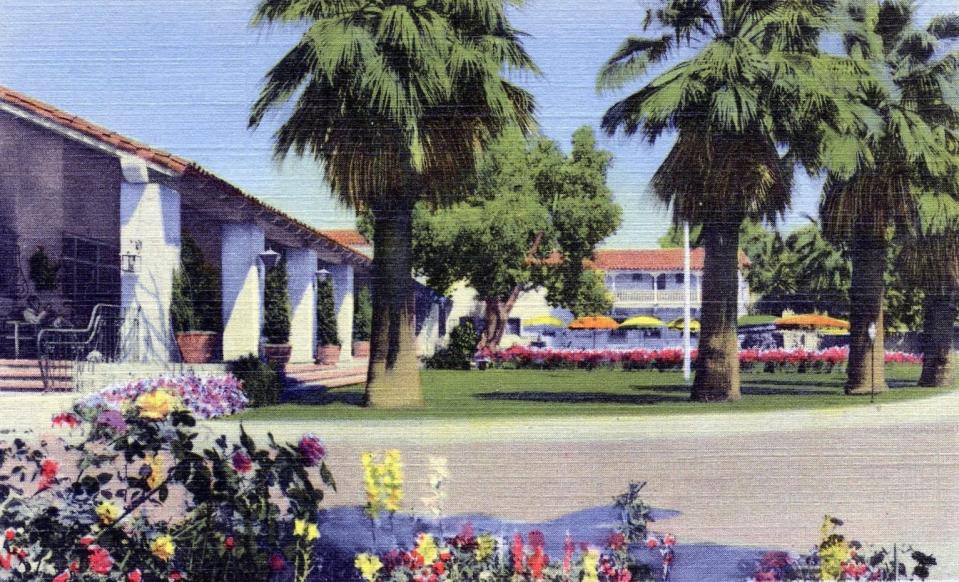History: Nellie Coffman invented the notion of a Palm Springs destination resort
The shadows were longer and the air a bit more still each autumn on the first day of October in the desert. The date was always auspicious: The Desert Inn would open for the season and the tiny town would awaken from a sleepy summer.
It’s worth pausing today, on Oct. 1, to pay homage to The Desert Inn and its imaginative and industrious proprietress Nellie Coffman. In the brief moment before the chaos and commotion of the season, a grateful remembrance is in order.
Coffman invented the destination resort we know now, with a few modest clapboard and tent house accommodations for the rare visitor passing through the unknown village of Palm Springs. Primitive as those early hotel rooms were, Coffman diligently swept the floors of desert sand. She and her employees wore crisp white uniforms, a miracle of sheer willpower in a desert landscape devoid of electricity and running water. Her hospitality and high standards were soon famous throughout California.

Coffman audaciously imagined her Desert Inn as a fine hotel establishment despite its improbable location far away from what most considered the civilized world. Having reality catch up to her imagination was no small feat. Borrowing immense funds from oil magnate Thomas O’Donnell to redevelop The Desert Inn in the then-popular Spanish Mediterranean style, Coffman hired William Charles Tanner as architect for the magnificent buildings of the Inn. Tanner was an artist and designer and built houses throughout the Southland.
Envisioned on a grand scale, there were one- and two-story buildings with encircling porches surrounding a grassy central park. Individual cottages were dotted about the grounds (Shirley Temple, the most famous movie star of the age, had her own eponymous cottage).
The extensive gardens also featured seasonal flowers, fountains and cactus specimens. Eventually a giant swimming pool, with a tall diving board and surrounding verandah, graced the grounds.
Scattered about the verdant landscape were private sunbathing contraptions, essentially a lounge with sides and a retractable roof allowing the sunbather inside to be seen only by the cloudless sky. There were ping-pong tables for hotel guests to test their skill against their fellow desert dwellers. Abundant bicycles allowed for riding around the sprawling 35-acre compound, or into the dinky two blocks of “town.”

The back porch of the main lobby building was deep and shaded, facing west. Its long expanse was tiled with Gladding McBean and Los Angeles Pressed Brick Company pavers and appointed with Old Hickory rocking chairs. Looking out toward the mountain over the grassy park was a major pastime of guests after sumptuous meals in the hotel dining room, also housed in the main building.
The dining room at The Desert Inn was the center of festivities. Tables were arranged in long columns and serviced by an enormous staff. Wooden bus stations, adorned with curly, wrought-iron hinges lined the walls between arched windows. At the far end of the room there were painted panels depicting the early history of California. The murals commemorated Juan Bautista De Anza’s trek up the coast of California in 1774, contemporaneous to the American Revolution on the other side of the country.
On the tables were an array of extraordinarily heavy silver-plated serving ware, engraved with two tiny palm trees and the inn’s insignia. Specially designed china featuring indigenous Indian motifs adorned the tables. The fare was varied and wonderful: fresh fruits, jellies and salads preceded entrees of lamb, beef, pork and chicken dishes with sides of green beans, potatoes and squash, prepared by the kitchen staff who lived in a two-story dormitory building north of the dining room. The offerings were spectacular, especially for a small village in a practically unknown desert.
In the mid-1940s, Coffman had some 200 employees and could house some 200 hotel guests. The massive operation was a small city; it constituted the very heart of the town. Coffman’s efforts made The Desert Inn famous, but more importantly it created Palm Springs as a resort destination.

Featured in a four-part nationally syndicated article by famous war reporter Ernie Pyle, Coffman was more than respected, she was lionized. Pyle credited Coffman with creating the whole idea of vacationing in the desert. In the 1942 article he noted, “she started what was to become the whole vast vogue of desert vacationing, all the great resorts — Tucson and Phoenix and Death Valley — the fancy hotels and the Southwest dude ranches and the thousands of trailers who have discovered the uncanny lure of the desert, it all began with Mother Coffman. The whole thing was built on one woman’s spiritual love of the desert.”
Coffman’s spirituality was considerable and entirely linked to the desert landscape. She espoused the four S’s: Space, Stillness, Solitude and Simplicity. Her willingness to share her desert paradise with others brought tourists and new residents alike, literally putting Palm Springs and the Coachella Valley at large on the map.
Coffman’s vision was carelessly discarded after her death in 1950 by those who misunderstood the true allure of the desert. The lovely garden spot with scattered bungalows and meandering paths was razed to the ground for parking and a shopping mall that failed over multiple iterations.
During construction of The Desert Inn, Nellie was quoted as saying it was built to last for 100 years. It was, in fact, incredibly difficult to demolish, taking much longer and requiring the heaviest of equipment. Coffman built it that way: solid, substantive.

The sad replacements were generic and utterly without charm. The destruction of The Desert Inn is a tragedy that still reverberates today. But Coffman’s notion of the allure of the desert landscape persists.
Pausing now, in in tiny recognition of the work achieved by a singularly industrious woman, her dream of creating a destination out of barren desert does not seem so far-flung. She defined the Palm Springs desert for the decades. With sheer ingenuity and industry, Coffman transformed the desert into an internationally recognized resort conjured up out of mere sand.
As the season begins in earnest on Oct. 1, it is important to remember it was not always so, and marvel at the accomplishments of Coffman.
Tracy Conrad is president of the Palm Springs Historical Society. The Thanks for the Memories column appears Sundays in The Desert Sun. Write to her at pshstracy@gmail.com.
This article originally appeared on Palm Springs Desert Sun: History: Coffman invented the notion of a desert destination resort
